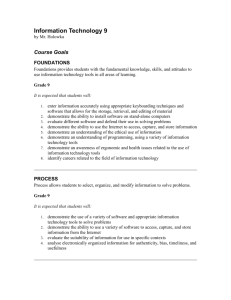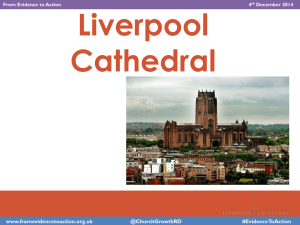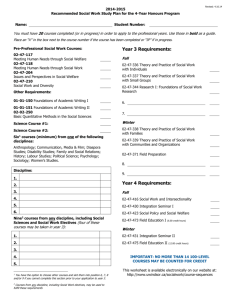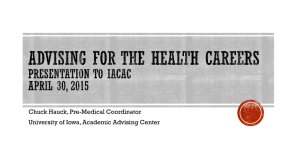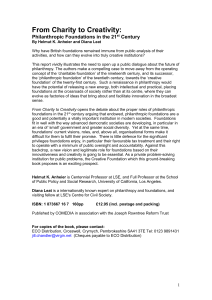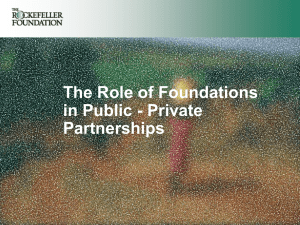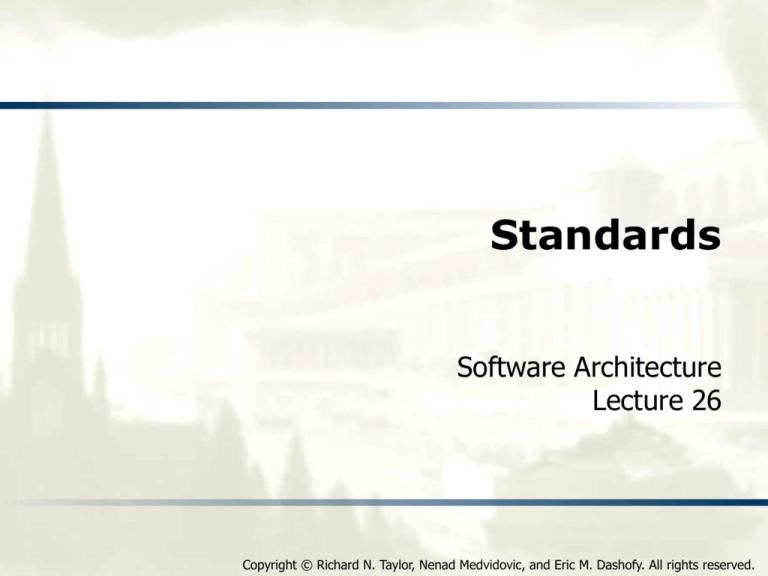
Standards
Software Architecture
Lecture 26
Copyright © Richard N. Taylor, Nenad Medvidovic, and Eric M. Dashofy. All rights reserved.
Software Architecture: Foundations, Theory, and Practice
Objectives
Concepts
What are standards?
Why use standards?
And why not? (drawbacks)
Deciding when to adopt a standard
Prevalent Architectural Standards
Conceptual standards
Notational standards
Standard tools
Process standards
2
Software Architecture: Foundations, Theory, and Practice
Objectives
Concepts
What are standards?
Why use standards?
And why not? (drawbacks)
Deciding when to adopt a standard
Prevalent Architectural Standards
Conceptual standards
Notational standards
Standard tools
Process standards
3
Software Architecture: Foundations, Theory, and Practice
What are standards?
Definition: a standard is a form of agreement between
parties
Many kinds of standards
For notations, tools, processes, organizations,
domains
There is a prevalent view that complying to standard ‘X’
ensures that a constructed system has high quality
This is almost never strictly true
But that doesn’t mean standards are worthless!
Here, we will attempt to put standards in perspective
4
Software Architecture: Foundations, Theory, and Practice
De jure and de facto standards
Some standards are controlled by a body considered
authoritative
ANSI, ISO, ECMA, W3C, IETF
These standards are called de jure (“from law”)
De jure standards usually
are formally defined and documented
are evolved through a rigorous, well-known process
are managed by an independent body, governmental
agency, or multi-organizational coalition rather than a
single individual or company
5
Software Architecture: Foundations, Theory, and Practice
De jure and de facto standards
(cont’d)
Some standards emerge through widespread awareness and use
These standards are called de facto (“in practice”)
De facto standards usually
are created by a single individual organization to address a
particular need
are adopted due to technical superiority or market dominance of
the creating organization
evolve through an emergent, market-driven process
are managed by the creating organization or the users
themselves, rather than through a formal custodial body
6
Software Architecture: Foundations, Theory, and Practice
Examples of de jure and de facto
De jure standards
UML (managed by OMG)
CORBA (also managed by OMG)
HTTP protocol (managed by IETF)
De facto standards
PDF format (managed by Adobe)
May become de jure through ISO
Windows (managed by Microsoft)
There is a substantial gray area between these two
7
Software Architecture: Foundations, Theory, and Practice
Gray-area Standards
HTML
Officially standardized by W3C, indicating de jure
Flavors and browser-specific extensions developed by
Microsoft, Netscape, and others, creating de facto variants
None of these has power to force users to use standard
JavaScript
Developed by Netscape; copied (as JScript) by Microsoft
After substantial adoption and possibly under threat of
forking/splintering, Netscape submits it to ECMA
Now standardized as ECMAScript (de jure)
JavaScript and variants continue to be developed as
compatible extensions of ECMAScript
8
Software Architecture: Foundations, Theory, and Practice
Another spectrum
Standards (whether de jure or de facto) can be:
Open
Allow public participation in the standardization
process
Anyone can submit ideas or changes for review
Closed (a.k.a. proprietary)
Only the custodians of a standard can participate
in its evolution
9
Software Architecture: Foundations, Theory, and Practice
Open vs. closed standards
Another spectrum with a gray area
Some standards bodies have high barriers to entry
(e.g., steep membership fees, vote of existing
membership)
Some standards (e.g., Java) have aspects of both
Sun Microsystems is effectively in control of Java
as a de facto standard
There is an open “community process” by which
external parties can participate in a limited way
10
Software Architecture: Foundations, Theory, and Practice
Why use standards?
Standards are an excellent way to create and exploit
A network effect exists if the value of participation
increases as the number of users of the standard
increases
network effects
versus
Other network effects:
TCP/IP, HTTP & HTML, UML…
11
Software Architecture: Foundations, Theory, and Practice
Why use standards? (cont’d)
To ensure interoperability between products developed
by different organizations
Usually in the interest of fostering a network effect
To carry hard-won engineering knowledge from one
project to another
To take advantage of hard-won engineering
knowledge created by others
As an effort to attract tool vendors
To create economies of scale in tools
To attempt to control the standard’s evolution in your
favor
12
Software Architecture: Foundations, Theory, and Practice
Drawbacks of standards
Limits your agility
Remember that doing ‘good’ architecture-based
development means identifying what is important in
your project
Standards often attempt to apply the same techniques to
a too-broad variety of situations
The most widely adopted standards are often the most
general
13
Software Architecture: Foundations, Theory, and Practice
Overspecification vs.
underspecification
A perennial tension in standards use and development
Overspecification
A standard prescribes too much and therefore limits
its applicability too much
Underspecification
A standard prescribes too little and therefore doesn’t
provide enough guidance
Possibly in an effort to broaden adoption
14
Software Architecture: Foundations, Theory, and Practice
Two different kinds of
underspecification
Two compromises often made in negotiation when
disagreements occur
Leave the disagreeable part of the standard
unspecified or purposefully ambiguous
Include both opinions in the standard but make them
both optional
Both of these weaken the standard’s value
Consider the different kinds of reduction in
interoperability imposed by these strategies
Although they may improve adoption!
15
Software Architecture: Foundations, Theory, and Practice
When to adopt a standard?
Early adoption
Benefits
Improved ability to influence the standard
Get
Early
your own goals incorporated; exclude competitors
to market
If
standard becomes successful, early marketers will
profit
Early
experience
Leverage
enhanced experience to your benefit
16
Software Architecture: Foundations, Theory, and Practice
When to adopt a standard?
(cont’d)
Early adoption
Drawbacks
Risk of failure
Standard
control
Moving
may not be successful for reasons out of your
target
Early
standards tend to evolve and ‘churn’ more than
mature ones, and may be ‘buggy’
Lack
of support
Early
standards tend to have immature (or no) support
from tool and solution vendors
17
Software Architecture: Foundations, Theory, and Practice
When to adopt a standard?
(cont’d)
Late adoption
Benefits
Maturity of standard
Better support
Drawbacks
Inability to influence the standard
Restriction of innovation
18
Software Architecture: Foundations, Theory, and Practice
Objectives
Concepts
What are standards?
Why use standards?
And why not? (drawbacks)
Deciding when to adopt a standard
Prevalent Architectural Standards
Conceptual standards
Notational standards
Standard tools
Process standards
19
Software Architecture: Foundations, Theory, and Practice
IEEE 1471
Recommended practice for architecture description
Often mandated for use in government projects
Scope is limited to architecture descriptions (as opposed
to processes, etc.)
Does not prescribe a particular notation for models
Does prescribe a minimal amount of content that
should be contained in models
Identifies the importance of stakeholders and advocates
models that are tailored to stakeholder needs
A notion of views and viewpoints similar to the ones
used in this course
20
Software Architecture: Foundations, Theory, and Practice
IEEE 1471 (cont’d)
Very high level
Purposefully light on specification
Does not advocate any specific notation or process
Useful as a starting point for thinking about architecture
Defines key terms
Advocates focus on stakeholders
Being compliant does NOT ensure that you are doing
good architecture-centric development
21
Software Architecture: Foundations, Theory, and Practice
Department of Defense Architecture
Framework
DoDAF, evolved from C4ISR
Has some other international analogs (MoDAF)
‘Framework’ here refers to a process or set of
viewpoints that should be used in capturing an
architecture
Not necessarily an architecture implementation
framework
Identifies specific viewpoints that should be captured
Includes what kinds of information should be
captured
Does not prescribe a particular notation for doing the
22
capture
Software Architecture: Foundations, Theory, and Practice
DoDAF (cont’d)
Concept
Our Term
DoDAF Term
A set of perspectives from which
descriptions are developed
Viewpoint set
View
A perspective from which
descriptions are developed
Viewpoint
(Kind of)
product
An artifact describing a system
from a particular perspective
View
Product
Some vocabulary inconsistency with our terms (and IEEE
1471 among others)
23
Software Architecture: Foundations, Theory, and Practice; Richard N. Taylor, Nenad Medvidovic, and Eric M. Dashofy; (C) 2008 John Wiley & Sons, Inc. Reprinted with permission.
Software Architecture: Foundations, Theory, and Practice
DoDAF (cont’d)
Three views (in our terms: viewpoint sets)
Operational View (OV)
“Identifies what needs to be accomplished, and who does it”
Defines processes and activities, the operational elements
that participate in those activities, and the information
exchanges that occur between the elements
Systems View (SV)
Describe the systems that provide or support operational
functions
and the interconnections between them
Systems in SV associated with elements in OV
24
Software Architecture: Foundations, Theory, and Practice
DoDAF (cont’d)
Three views (in our terms: viewpoint sets)
Technical Standards View (TV)
Identify standards, (engineering) guidelines, rules,
conventions, and other documents
To ensure that implemented systems meet their
requirements and are consistent with respect to
the fact that they are implemented according to a
common set of rules
Also a few products address cross cutting concerns that
affect All Views (AV)
E.g., dictionary of terms
25
Software Architecture: Foundations, Theory, and Practice
DoDAF Examples
OV-1
“High-Level Operational Concept Graphic”
26
Software Architecture: Foundations, Theory, and Practice; Richard N. Taylor, Nenad Medvidovic, and Eric M. Dashofy; (C) 2008 John Wiley & Sons, Inc. Reprinted with permission.
Software Architecture: Foundations, Theory, and Practice
DoDAF Examples (cont’d)
OV-4
“Organizational Relationships”
27
Software Architecture: Foundations, Theory, and Practice; Richard N. Taylor, Nenad Medvidovic, and Eric M. Dashofy; (C) 2008 John Wiley & Sons, Inc. Reprinted with permission.
Software Architecture: Foundations, Theory, and Practice
DoDAF Examples (cont’d)
Note implied correspondence
with OV-1 entities
SV-1
“Systems Interface Description”
28
Software Architecture: Foundations, Theory, and Practice; Richard N. Taylor, Nenad Medvidovic, and Eric M. Dashofy; (C) 2008 John Wiley & Sons, Inc. Reprinted with permission.
Software Architecture: Foundations, Theory, and Practice
DoDAF Examples (cont’d)
SV-3
“Systems-Systems Matrix”
One of several “N2” views
in DoDAF
29
Software Architecture: Foundations, Theory, and Practice; Richard N. Taylor, Nenad Medvidovic, and Eric M. Dashofy; (C) 2008 John Wiley & Sons, Inc. Reprinted with permission.
Software Architecture: Foundations, Theory, and Practice
DoDAF Examples (cont’d)
TV-1
“Technical Standards Profile ”
30
Software Architecture: Foundations, Theory, and Practice; Richard N. Taylor, Nenad Medvidovic, and Eric M. Dashofy; (C) 2008 John Wiley & Sons, Inc. Reprinted with permission.
Software Architecture: Foundations, Theory, and Practice
DoDAF Takeaways
Extremely comprehensive standard advocating capture of
many views
Takes a high-level organizational perspective
OV views tend to deal with human and systems
organizations
SV views tend to deal with technical aspects of systems
(most like the architectural descriptions we have been
talking about)
TV views tend to deal with practical issues of reuse and
leveraging existing technology
Tells us a lot about WHAT to model, but nearly nothing
about HOW to model it
31
Software Architecture: Foundations, Theory, and Practice
The Open Group Architecture
Framework
TOGAF – an “enterprise architecture” framework
Focuses beyond hardware/software
How can enterprises build systems to achieve business goals?
Four key areas addressed
Business concerns, which address business strategies,
organizations, and processes;
Application concerns, which address applications to be
deployed, their interactions, and their relationships to
business processes;
Data concerns, which address the structure of physical and
logical data assets of an organization and the resources that
manage these assets; and
Technology concerns, which address issues of infrastructure
and middleware.
32
Software Architecture: Foundations, Theory, and Practice
TOGAF Part 1: ADM
An iterative process for
architecture-centric
development
Each step in the
proceses associated
with views to be
captured
Early phases focus on
conceptual issues; later
phases move toward
reduction to practice
33
Redrawn from the TOGAF Specification
Software Architecture: Foundations, Theory, and Practice; Richard N. Taylor, Nenad Medvidovic, and Eric M. Dashofy; (C) 2008 John Wiley & Sons, Inc. Reprinted with permission.
Software Architecture: Foundations, Theory, and Practice
TOGAF Part 2: Enterprise Continuum
Redrawn from the TOGAF Specification
Taxonomizes different kinds of architectures and the
solutions that are supported by those
Left side is more technical and concrete
Right side is more organizational
TOGAF Technical Reference Model and Standards
Information Base identifies and taxonomizes many
solution elements
34
Software Architecture: Foundations, Theory, and Practice; Richard N. Taylor, Nenad Medvidovic, and Eric M. Dashofy; (C) 2008 John Wiley & Sons, Inc. Reprinted with permission.
Software Architecture: Foundations, Theory, and Practice
TOGAF Part 3: TOGAF Resource
Base
A collection of useful information and resources that can
be employed in following the ADM process
Includes
advice on how to set up boards and contracts for
managing architecture
checklists for various phases of the ADM process
a catalog of different models that exist for evaluating
architectures
how to identify and prioritize different skills needed to
develop architectures
....
35
Software Architecture: Foundations, Theory, and Practice
TOGAF Takeaways
Large size and broad scope looks at systems
development from an enterprise perspective
More suited to developing entire organizational
information systems rather than indivdiual applications
A collection and clearinghouse for IT “best practices” of
all sorts
36
Software Architecture: Foundations, Theory, and Practice
RM-ODP
Another standard for viewpoints, similar to DoDAF but
more limited in scope; resemble DoDAF SV
Prescribes 5 viewpoints for distributed systems
Engineering
view
Enterprise View
37
Software Architecture: Foundations, Theory, and Practice; Richard N. Taylor, Nenad Medvidovic, and Eric M. Dashofy; (C) 2008 John Wiley & Sons, Inc. Reprinted with permission.
Software Architecture: Foundations, Theory, and Practice
UML
Discussed extensively already in this course
As a standard, primarily prescribes a syntax
Some semantics with purposeful ambiguity
Encourages specialization of the standard through the
use of profiles, which are mini-standards
38
Software Architecture: Foundations, Theory, and Practice; Richard N. Taylor, Nenad Medvidovic, and Eric M. Dashofy; (C) 2008 John Wiley & Sons, Inc. Reprinted with permission.
Software Architecture: Foundations, Theory, and Practice
UML Takeaways
Provide a common syntactic framework to express many
common types of design decisions
Profiles are needed to improve rigor
But profiles can only specialize existing UML diagram
types, not create new ones
Documenting a system in UML does not ensure overall
system quality
You can document a bad architecture in UML as easily
as a good one
39
Software Architecture: Foundations, Theory, and Practice
SysML
An extended version of UML
Developed by a large consortium of organizations
(mainly large system integrators and developers)
Intended to mitigate UML’s “software bias”
SysML group found UML standard insufficient and
profiles not enough to resolve this
Developed new diagram types to capture systemengineering specific views
Limited momentum among tool vendors; focus
shifting to more heavily use UML profiles
40
Software Architecture: Foundations, Theory, and Practice
SysML Diagrams
SysML
Requirement
Diagram
SysML
Parametric
Diagram
41
Software Architecture: Foundations, Theory, and Practice; Richard N. Taylor, Nenad Medvidovic, and Eric M. Dashofy; (C) 2008 John Wiley & Sons, Inc. Reprinted with permission.
Software Architecture: Foundations, Theory, and Practice
Standard UML Tools
E.g., Rational Rose, ArgoUML, Microsoft Visio
These are de facto standards
All support drawing UML diagrams
Vary along several dimensions
Support for built-in UML extension mechanisms
Profiles, stereotypes, tagged values, constraints
Support for UML consistency checking
Ability to generate other artifacts
Generation of UML from other artifacts
Traceability to other systems
Support for capturing non-UML information
42
Software Architecture: Foundations, Theory, and Practice
ArgoUML – a UML tool
43
Screenshot from the Argo/UML Website and Documentation
Software Architecture: Foundations, Theory, and Practice
Telelogic System Architect
Formerly Popkin System Architect; popular among architects
Supports 50+ different diagram types
UML, IDEF, OMT, generic flowcharting, even GUI
design
Variants for DoDAF, service-oriented architectures,
enterprise resource planning
Effectively generic diagram editor specialized for many
different diagram types with different symbols, connections
Very little understanding of diagram semantics
Specialized variants have some understanding of
semantics but generally less than notation-specific editors
44
Software Architecture: Foundations, Theory, and Practice
Rational Unified Process
Phased iterative
process
framework/metaprocess
Like spiral model,
focus on iteration
and risk
management
Tends to view
architecture as an
artifact rather
than a pervasive
discipline
Redrawn from the RUP documentation
45
Software Architecture: Foundations, Theory, and Practice; Richard N. Taylor, Nenad Medvidovic, and Eric M. Dashofy; (C) 2008 John Wiley & Sons, Inc. Reprinted with permission.
Software Architecture: Foundations, Theory, and Practice
Model-Driven Architecture
Also known as MDA
Core idea: specify your architecture in detailed enough terms that
implementations can
be auto-generated
entirely from models
This vision is hard to
achieve in general
May be more
successful in a
strong DSSE
context
46
Redrawn from the MDA documentation
Software Architecture: Foundations, Theory, and Practice; Richard N. Taylor, Nenad Medvidovic, and Eric M. Dashofy; (C) 2008 John Wiley & Sons, Inc. Reprinted with permission.
Software Architecture: Foundations, Theory, and Practice
Overall Takeaways
Standards confer many benefits
Network effects, reusable engineering knowledge,
interoperability, common vocabulary and understanding
But are not a panacea!
Knowledge of a breadth of standards is needed to be a good
architect, but it is critical to maintain perspective
Caveats
This has been a very quick tour through complex standards;
many standards are hundreds of pages and can’t adequately be
explained in five minutes
Most available online – investigate yourself!
47

